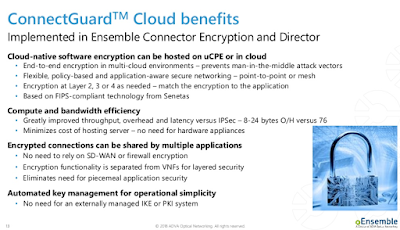Verizon Communications has designated Amazon Web Services (AWS) as its preferred public cloud provider as part of a corporate-wide initiative to increase agility and reduce costs through the use of cloud computing.
Verizon is migrating over 1,000 business-critical applications and database backend systems to AWS, several of which also include the migration of production databases to Amazon Aurora—AWS’s relational database engine. Verizon is also building AWS-specific training facilities, called “dojos,” where its employees can quickly ramp up on AWS technologies and learn how to innovate with speed and at scale.
The companies noted that Verizon first started working with AWS in 2015. This latest wave of migrations to AWS accelerates Verizon's digital transformation.
"We are making the public cloud a core part of our digital transformation, upgrading our database management approach to replace our proprietary solutions with Amazon Aurora," said Mahmoud El-Assir, Senior Vice President of Global Technology Services at Verizon. “The agility we’ve gained by moving to the world’s leading public cloud has helped us better serve our customers. Working with AWS complements our focus on efficiency, speed, and innovation within our engineering culture, and has enabled us to quickly deliver the best, most efficient customer experiences."
“We look forward to continuing our work with Verizon as their preferred public cloud provider, helping them to continually transform their business and innovate on behalf of their customers. The combination of Verizon’s team of builders with AWS’s extensive portfolio of cloud services and expertise means that Verizon’s options for delighting their customers is virtually unlimited,” stated Mike Clayville, Vice President, Worldwide Commercial Sales at AWS.
Verizon is migrating over 1,000 business-critical applications and database backend systems to AWS, several of which also include the migration of production databases to Amazon Aurora—AWS’s relational database engine. Verizon is also building AWS-specific training facilities, called “dojos,” where its employees can quickly ramp up on AWS technologies and learn how to innovate with speed and at scale.
The companies noted that Verizon first started working with AWS in 2015. This latest wave of migrations to AWS accelerates Verizon's digital transformation.
"We are making the public cloud a core part of our digital transformation, upgrading our database management approach to replace our proprietary solutions with Amazon Aurora," said Mahmoud El-Assir, Senior Vice President of Global Technology Services at Verizon. “The agility we’ve gained by moving to the world’s leading public cloud has helped us better serve our customers. Working with AWS complements our focus on efficiency, speed, and innovation within our engineering culture, and has enabled us to quickly deliver the best, most efficient customer experiences."
“We look forward to continuing our work with Verizon as their preferred public cloud provider, helping them to continually transform their business and innovate on behalf of their customers. The combination of Verizon’s team of builders with AWS’s extensive portfolio of cloud services and expertise means that Verizon’s options for delighting their customers is virtually unlimited,” stated Mike Clayville, Vice President, Worldwide Commercial Sales at AWS.


















